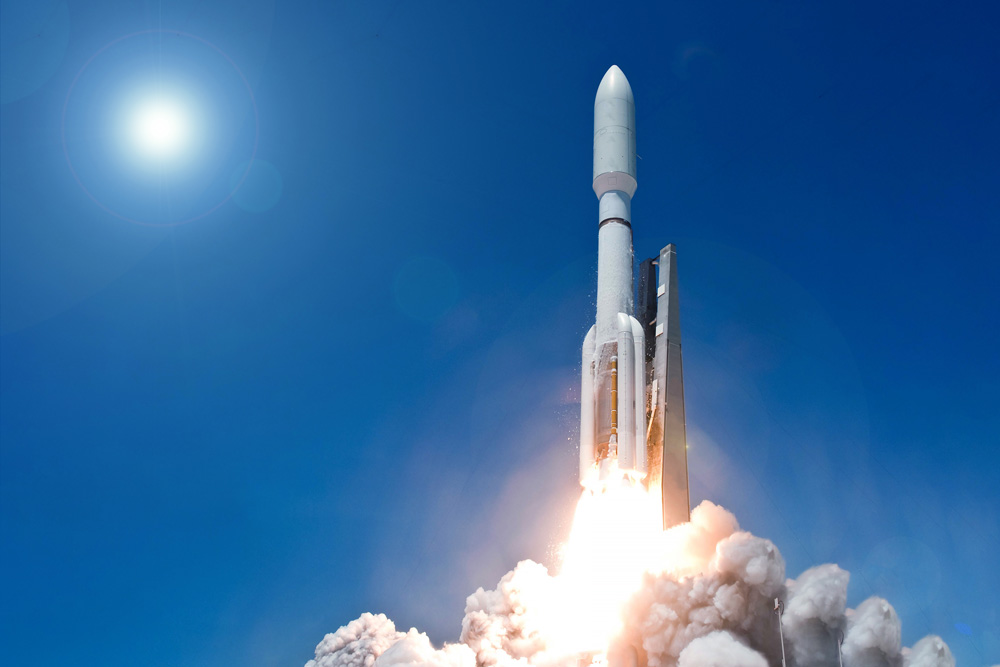
It goes without saying that space is the most challenging operational environment known to man. As humanity embarks on a new era of space exploration, the threats to modern spacecraft and space launch systems are only going to grow as missions extend further and further out into space and embark into new environments like Mars and the lunar south pole — the site of future manned missions to the Moon.
%20Compressed.jpg)
Severe space environments present a never-ending list of operational perils that can jeopardize mission success. These risks include exposure to extreme temperatures, high levels of radiation and vibration, communication delays, and the durability challenges posed by long-duration missions in deep space. All interconnect systems within the underlying system architecture of tomorrow’s advanced spacecraft must be able to sustain a severe level of punishment while maintaining rigid performance standards that exceed that of systems that remain within low-Earth orbit (LEO) space.
With ambitious missions on the horizon including NASA's Artemis program aiming to return humans to the Moon’s surface by the end of the decade, and plans to send humans to Mars, it’s critical to utilize hardened and reliable interconnect systems that minimize operational risks to craft and personnel deep in space.
LEAVING EARTH'S ORBIT PRESENTS GREATER CHALLENGES TO SPACECRAFT
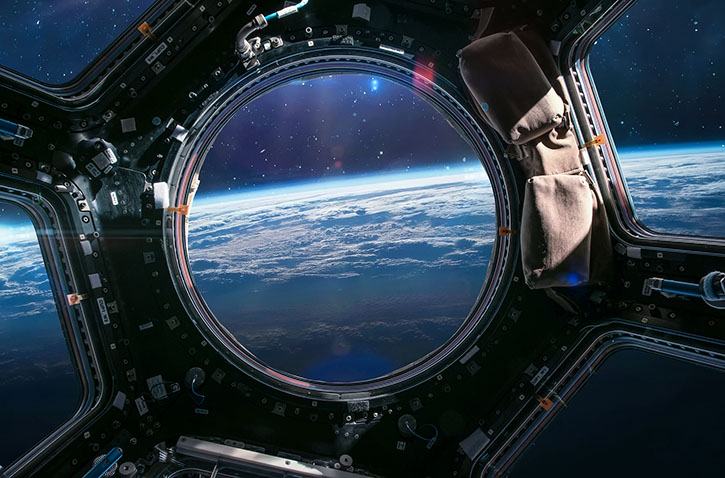
Humanity’s last manned venture past LEO space was the Apollo 17 mission in 1972. Since then, all human spaceflight has remained within LEO, including those to the International Space Station (ISS). That’s about to change with Artemis and future manned missions to Mars, as well as long-term goals to establish permanent lunar and Martian bases.
The conditions out in deep space are harsher than those in LEO space, which is generally considered the region of space within an altitude range of 100 miles to 1,200 miles above the Earth’s surface.
LEO space provides several protections compared to the vastness of interplanetary space. For instance, Earth’s gravity is still significant in the LEO region and there is still a residual atmosphere. This provides protection against cosmic radiation with less severe temperature fluctuations due to the alternation between sunlight and shadow approximately every 90 minutes. In LEO space, astronauts also benefit from quicker communications with Earth.
This all changes in interplanetary space where astronauts and spacecraft experience much greater radiation exposure due to the lack of natural protections. And if there’s a problem that requires the assistance of engineers, doctors, or other experts on Earth, communications can take longer the further you venture out.
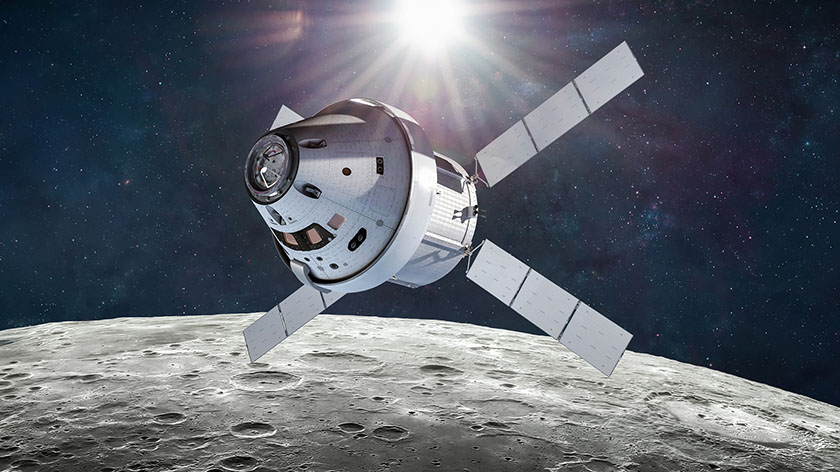
Concept art of the Orion Spacecraft landing on the moon’s surface as part of the Artemis program, which plans to bring humans to the moon’s surface for the first time since Apollo 17 in 1972.
The Moon is approximately 240,000 miles away. It’s a massive distance, but fortunately, communications are only delayed a little more than a second due to the relative proximity to Earth. On the other hand, there’s an average of 140 million miles separating Mars from Earth throughout their orbital periods. At opposition the two planets are nearly 249 million miles away from each other, resulting in a one-way message delay ranging from three minutes to as long as 22 minutes. This means on Mars it can take up to nearly 45 minutes for a message to be sent, received, and responded to.
The following are a few examples of threats to system integrity that will become more severe the further astronauts venture out into space.
EXTREME TEMPERATURES
Spacecraft are subjected to a wide range of temperatures depending on their location and exposure to solar radiation. LEO space provides a relatively stable thermal environment due to the proximity to Earth and the regular alternation between sunlight and shadow, which occurs approximately every 90 minutes due to the orbital period, as stated earlier.
LEO spacecraft in direct sunlight can experience temperatures as hot as 250°F (121°C), while those in shadow can plunge to -250°F (-157°C). Spacecraft exposed to sunlight in deep space can experience similar scorching temperatures, with cold temperatures nosediving to as low as -454°F (-270°C), which is just a few degrees above absolute zero.
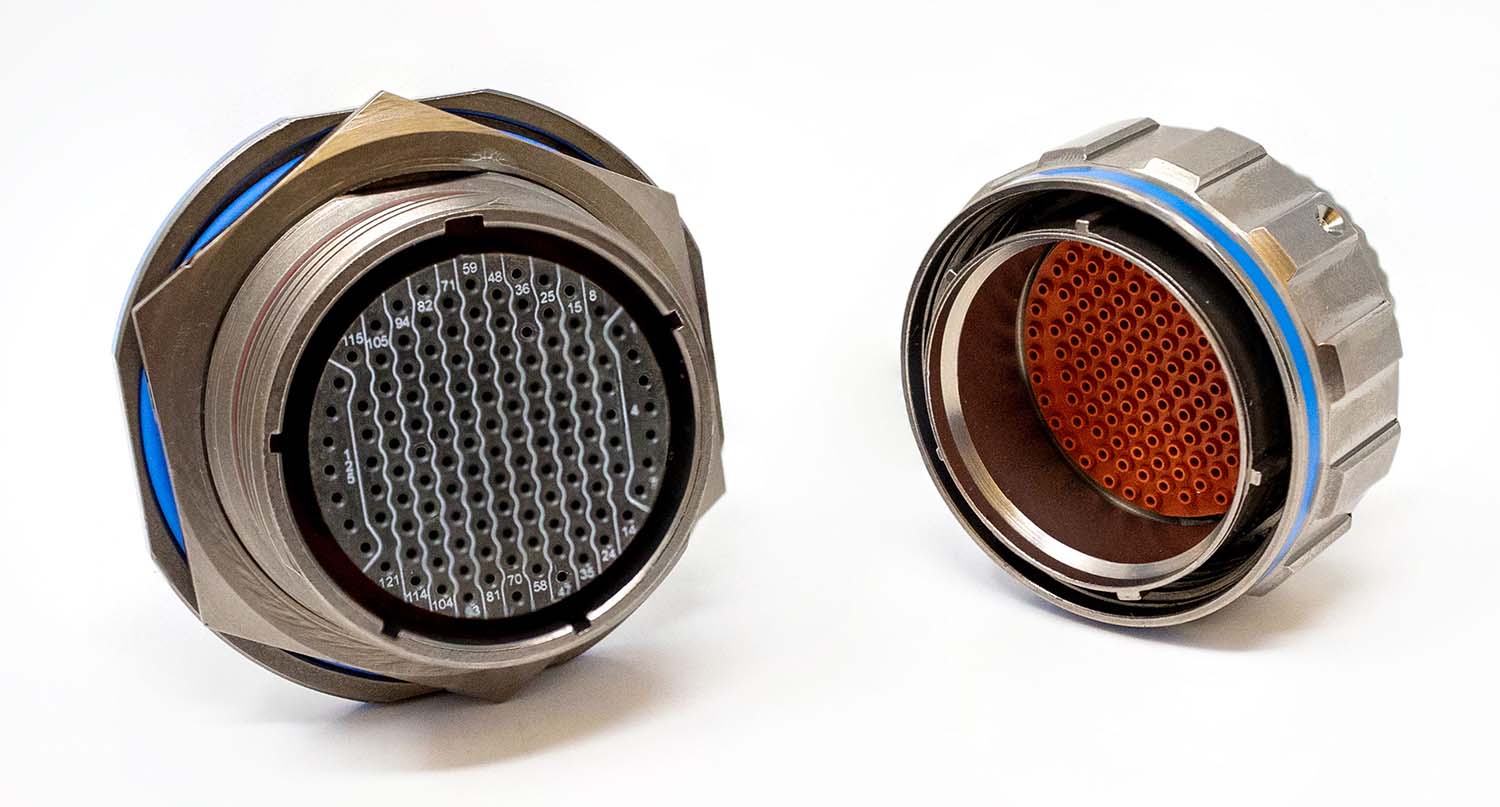
Amphenol’s Deep Space 38999 is designed for performance in frigid temperatures.
Amphenol Deep Space Connectors have undergone successful cycle testing in both cold temperatures (-148 °F/-100 °C) and extreme heat (392 °F/200 °C), with an option for upgraded elastomers that can withstand frigid temperatures of 319°F (-195 °C).
Cryo-Seal Hermetic Connectors are designed for performance in these same low-temperature environments (319°F/-195 °C) and feature a strong hermetic seal with leak rates as low as 1x10^-7 cc/sec of helium. Coupling Deep Space and Cryo-Seal will provide users with a true cryogenic mated pair for their applications that must perform in bitter temperatures.
For comprehensive extreme temperature performance throughout your system, consider also incorporating High Temperature Series Five connectors into your assembly. The compact MIL-SPEC-type High Temperature Series Five can endure blistering temperatures up to 572°F (300°C), which, combined with the cold performance capabilities of Deep Space and Cryo-Seal, prepare your entire system for high-performance operation across the temperature spectrum.
COMMUNICATION DELAYS
As spacecraft travel further from Earth, communication delays become more pronounced. For missions to Mars, for example, the one-way communication delay can range from 3 to 22 minutes, as mentioned earlier. This means spacecraft systems and astronauts must be capable of performing complex operations and responding to a wide set of unexpected circumstances without immediate external assistance. Communication systems must also be up to par with high-speed components offering very high data rates that reduce latency and utilize bandwidth efficiently to ensure communications with Earth are as streamlined as possible.
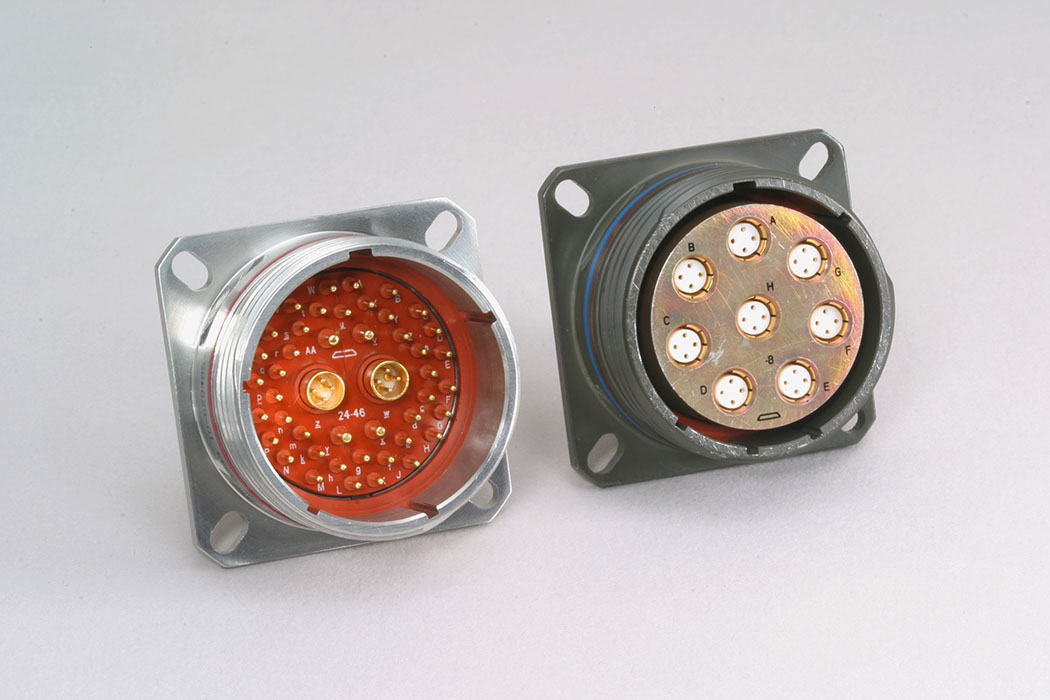
Amphenol's High Speed Circular Connectors are designed to provide advanced data transmission in extremely rugged environments. These connectors are built around MIL-DTL-38999 specifications and are offered with a variety of high-speed contacts, including quadrax, coaxial, twinax, and triax contacts. Our high-speed circular connectors are available in various shell sizes and configurations to accommodate specific application requirements.
ELECTROSTATIC DISCHARGE EVENTS
Electrostatic discharge (ESD) events are responsible for a large share of system malfunctions in spacecraft. The conditions surrounding ESD-caused failures in space can be exasperated the further you travel out into interplanetary space.
ESD events in deep space present more significant risks compared to those in low Earth orbit (LEO) due to increased radiation exposure, lack of atmospheric protection, and extreme temperature variations. In deep space, spacecraft are subjected to higher levels of cosmic rays and solar particles without the shielding effects of Earth's magnetosphere. This environment leads to a greater accumulation of electrical charges on the spacecraft, making ESD events more likely and intense. The vacuum of space and the absence of an atmospheric buffer also exacerbate material degradation, which can compromise the effectiveness of ESD protection measures.
When ESD events happen in LEO space, satellites, and crew in space enjoy the benefit of close proximity ground support and easier access to resupply and repair missions. Unlike LEO missions, which benefit from near-instantaneous communication with Earth, deep space missions must operate more autonomously due to the significant communication delays, meaning these events must be mitigated and thwarted to the highest degree possible.
-1%20Compressed.jpg)
Amphenol filter connectors provide comprehensive protection against EMI, EMP, and ESD events throughout your system.
Amphenol's EMI/EMP Filter Connectors protect your systems against electromagnetic interference (EMI), electromagnetic pulse (EMP), and ESD events. These connectors feature solid metal-to-metal coupling and conductive finishes that significantly enhance their shielding capabilities. Our filter connectors come in a selection of options to choose from depending on your threat profile, including several low-pass filter options for EMI protection and transient voltage suppression (TVS) diodes or metal oxide varistors (MOVs) for transient voltage events. Filtering capabilities can be applied throughout our MIL-SPEC portfolio, including on MIL-DTL-38999 Series I, Series II, and Series III.
SPACE AND WEIGHT CONSTRAINTS
Weight is a critical factor in the design and cost of advanced spacecraft. Although the cost to send a kilogram into space has significantly decreased in recent years due to advancements in rocket technology and increased competition in the commercial space sector, reducing space and weight remains a priority.
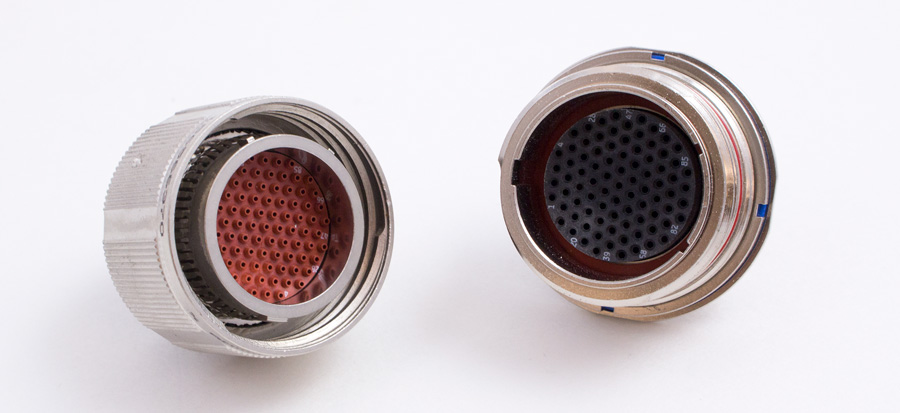
Amphenol’s 2M Micro 38999 portfolio provides MIL-DTL-38999 performance at a fraction of the size and weight.
Every kilogram added to a spacecraft requires more fuel and stronger structural components. Lighter craft are also easier to maneuver and require less propulsion to reach and navigate faraway destinations, which is critical for long-duration missions to Mars or beyond where fuel efficiency and resource management is a major priority. Having less space and weight means essential systems must be downsized and made as lightweight as possible.
LONG DURATION MISSIONS
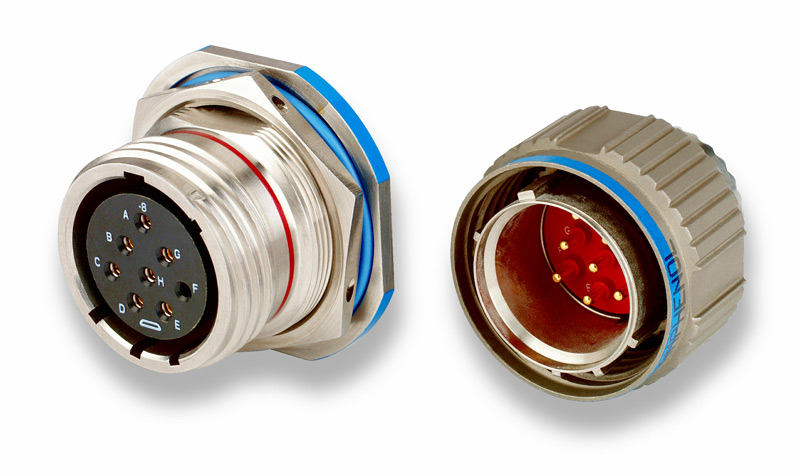
Amphenol MIL-DTL-38999 Series I, Series II, and Series III (pictured above) are the industry standard circular connector for harsh environment applications. Series III connectors offer the highest performance capabilities for both general duty and severe environment applications.
Long-term missions to the Moon or extremely distant destinations like Mars involve prolonged exposure to severe space conditions. The cumulative effects of radiation and potential system degradations over time means essential systems such as life support systems and communication systems are at risk of malfunction and failure if not properly hardened and ruggedized with the right components for long-term use in space.
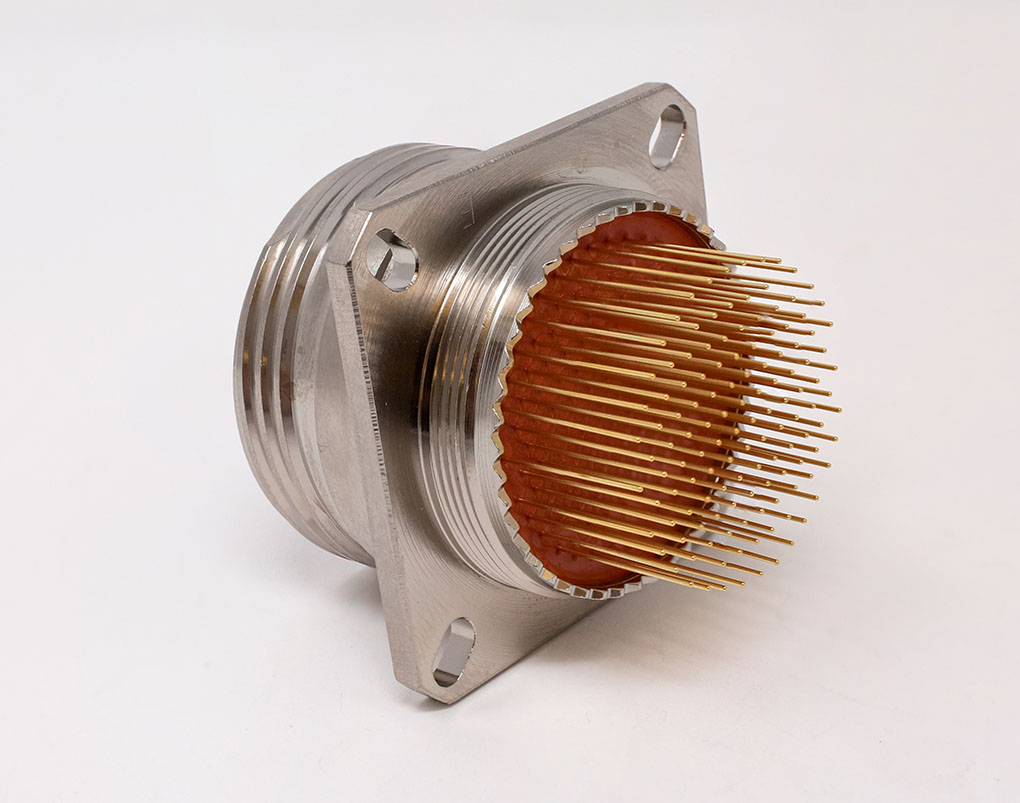
Amphenol's Hermetic Connectors are designed for applications requiring airtight sealing and robust performance in harsh environments. These connectors feature glass-to-metal sealing technology, ensuring superior electrical performance and a leak rate of 1x10^-7 cc/sec helium. They are available in various configurations, including MTL-DTL-38999 Series I, Series II, and Series III, box mount, jam nut, solder mount receptacles, and more.
Our hermetic connectors are built with stainless steel or carbon steel shells, providing excellent corrosion resistance and durability. With features like anti-decoupling mechanisms, dual start threads for fast mating, and shell standoffs for PC board washout, these connectors are ideal for space applications where reliability and environmental sealing are critical.
HIGH VIBRATIONS
While much less of a concern once spacecraft have reached space where there are minimal external sources of vibration, high vibrations during launch are always a risk. If not accounted for throughout the system, extensive vibrations during launch can cause structural damage, damage to sensitive equipment, and increased thermal and mechanical stress. Vibrations can cause material fatigue, leading to cracks and potential structural failure, and can displace critical components. Delicate electronics, scientific instruments, and optical devices are particularly vulnerable, risking malfunctions or misalignment. Vibrations also generate heat and cause mechanical wear, further stressing the spacecraft.
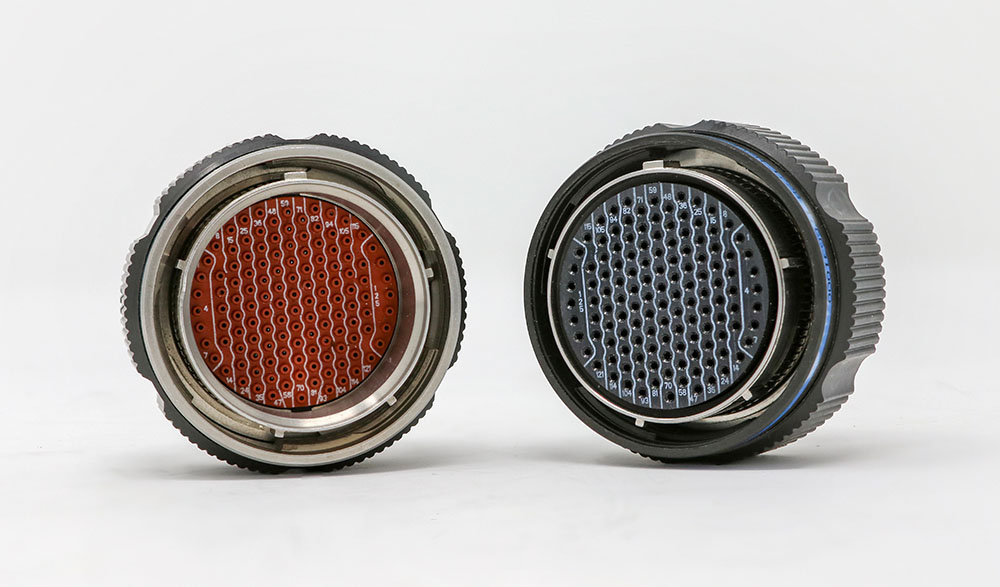
Amphenol's Dualok Connectors feature an advanced anti-decoupling mechanism designed to excel in applications that must withstand severe vibration and shock. The Dualok system mitigates high-vibration-induced connector back-off and reduces conditions that cause fretting corrosion, which improves performance under extreme conditions such as electrostatic discharge events and more. Dualok connectors are compatible with all D38999 Series III receptacle interfaces and meet Boeing Specification BACC63EK, offering superior shell-to-shell conductivity and minimized contact fretting. Dualok connectors are available in lightweight composite and metal designs, providing both size and weight savings while ensuring consistent and reliable performance.
Visit Amphenol’s 38999 Plus catalog for more information on the entire 38999 Plus family.